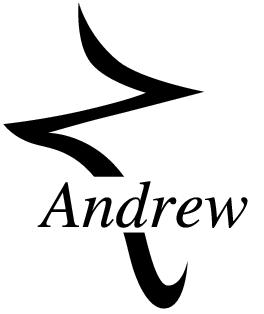

At the June 21 meeting of the BCS Linux & Unix User Group we were fortunate to have Bill Cattey give us an overview of the Andrew User Interface System (AUIS). Mr. Cattey, who has worked with AUIS for nearly a decade, started his presentation with a brief history of this graphical interface.
Carnegie Mellon University and IBM developed Andrew to connect personal computers to the university's computer facility. The basic idea was to use Andrew as courseware that would some day make Carnegie a paperless school, similar to the paperless office concept. This was in 1982 when typical collegiate computers were time sharing systems. In its early stages, Andrew was referred to as the "Andrew Tool Kit". Later, several other universities and businesses joined to further develop Andrew and now this system is referred to as the Andrew User Interface System. The current development of AUIS is funded and coordinated by the Andrew Consortium.
There are several pieces to the AUIS. The Andrew File System is a distributed file system that has been adopted by the Open System Foundation. Another piece is the Andrew Message System. Mr. Cattey briefly explained the evolution of email messages from simple ASCII single font text to variable font text, them to graphics, animation, and sound. The Andrew Message System is a multimedia email system that is capable of multiple fonts, graphics, animation, and sound.
Another piece of the AUIS is the Andrew Help System. Since the AUIS is based on the paperless office concept, documentation is within the system (nearly 1 megabytes of text). You can get help by selecting it from menus or by typing auishelp and the subject in an xterm window.
Bill Cattey gave us a demonstration of an application called ez (it is not capitalized). This is a text and graphics editor that uses the data to determine the tools available to the user. In other words when working on the text part of a document, ez provides text editing features; when working on a graphical object, ez provides drawing features. The result is almost a WYSIWYG (What You See Is What You Get) document. Usually there will be some differences between the displayed document and the printed version. This is because ez and AUIS are primarily video systems intended for email where printing is less important. AUIS and ez now use the PostScript print description language to control page layout while printing. Apparently initial printer setup can be difficult but this is expected to change in version 7.
Most of ez was written by people who were Emacs literate, so many of the keyboard commands are the same. In addition ez uses the function keys for several commonly used functions. Those keys and the keystroke combinations can be redefined. ez comes with a good variety of styles (formatting and font manipulation abilities) and a style editor that allows you to create your own styles. Custom and commonly used styles can be saved as templates. These define text that is often repeated, and they also define formatting styles. Several pre-made templates come with ez. All of ez is easy to customize, you can change both its appearance and its operation to suit your needs. Towards the end of the presentation, Bill Cattey demonstrated how easy it is to build and define a custom AUIS window.
Mr. Cattey mentioned some other AUIS applications including three programming languages. There are two versions of LISP and a language called NES which is a string based interpretive scripting language.
Mr. Cattey concluded his talk by urging all of us to get AUIS and use it! You can find it at ftp://sunsite.unc.edu/pub/linux/X11/andrew/
There is an Andrew mailing list called info-andrew+@andrew.cmu.edu. To subscribe, email info-andrew-request@andrew.cmu.edu with a message that just says "subscribe". There is a Web page that you can find at http://www.cs.cmu.edu:8001:/afs/cs.cmu.edu/project/atk-ftp/web/andrew-home.html.
For more information about the BCS Linux/Unix Group, there is a mailing list called discuss@blu.org. To subscribe, email majordomo@bcs.org with a message that says "subscribe discuss" in the message body. There is a Web page that you can find at http://www.blu.org/.
Special thanks to Bill Cattey for an excellent talk!!! You can email him by sending it to wdc@mit.edu.